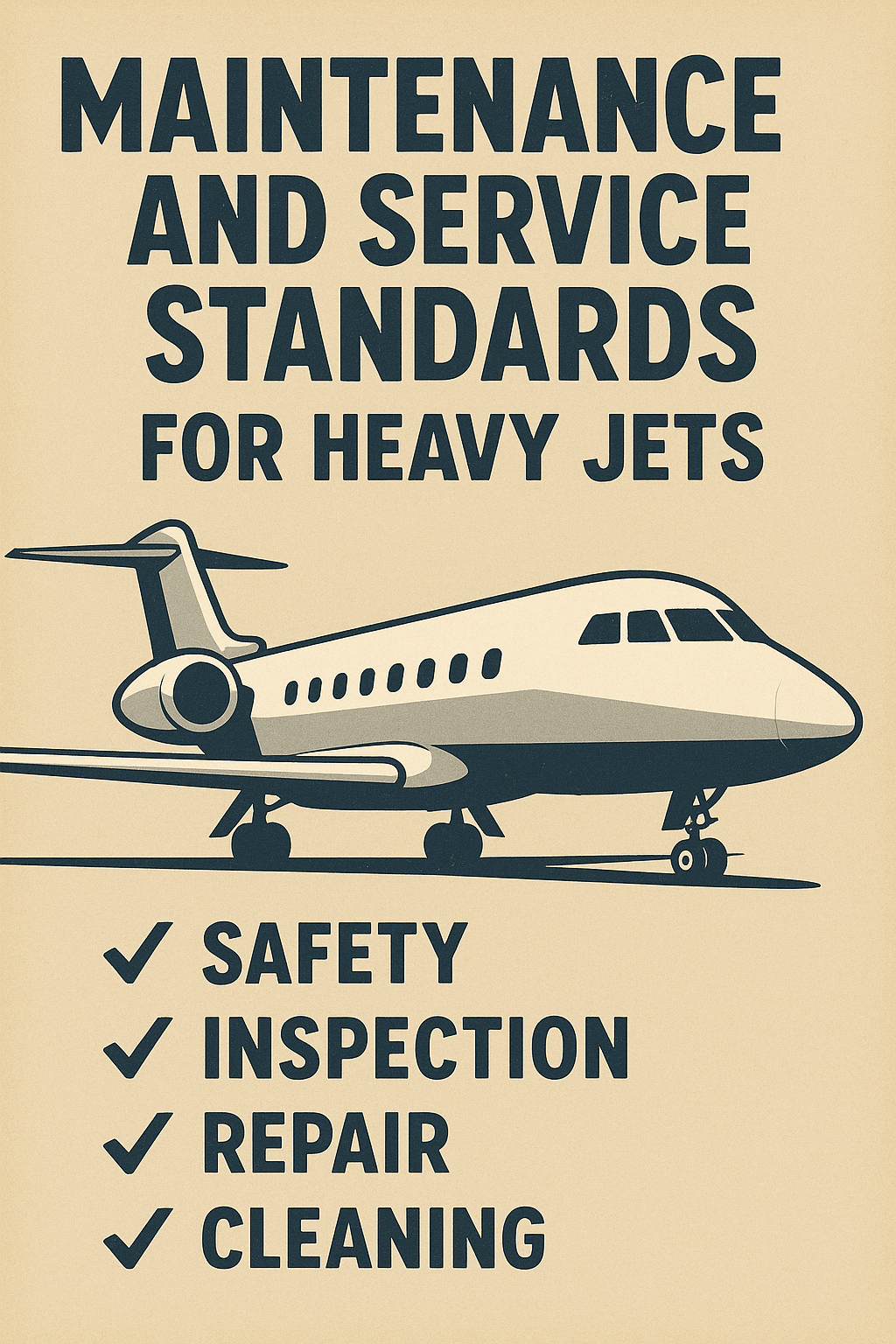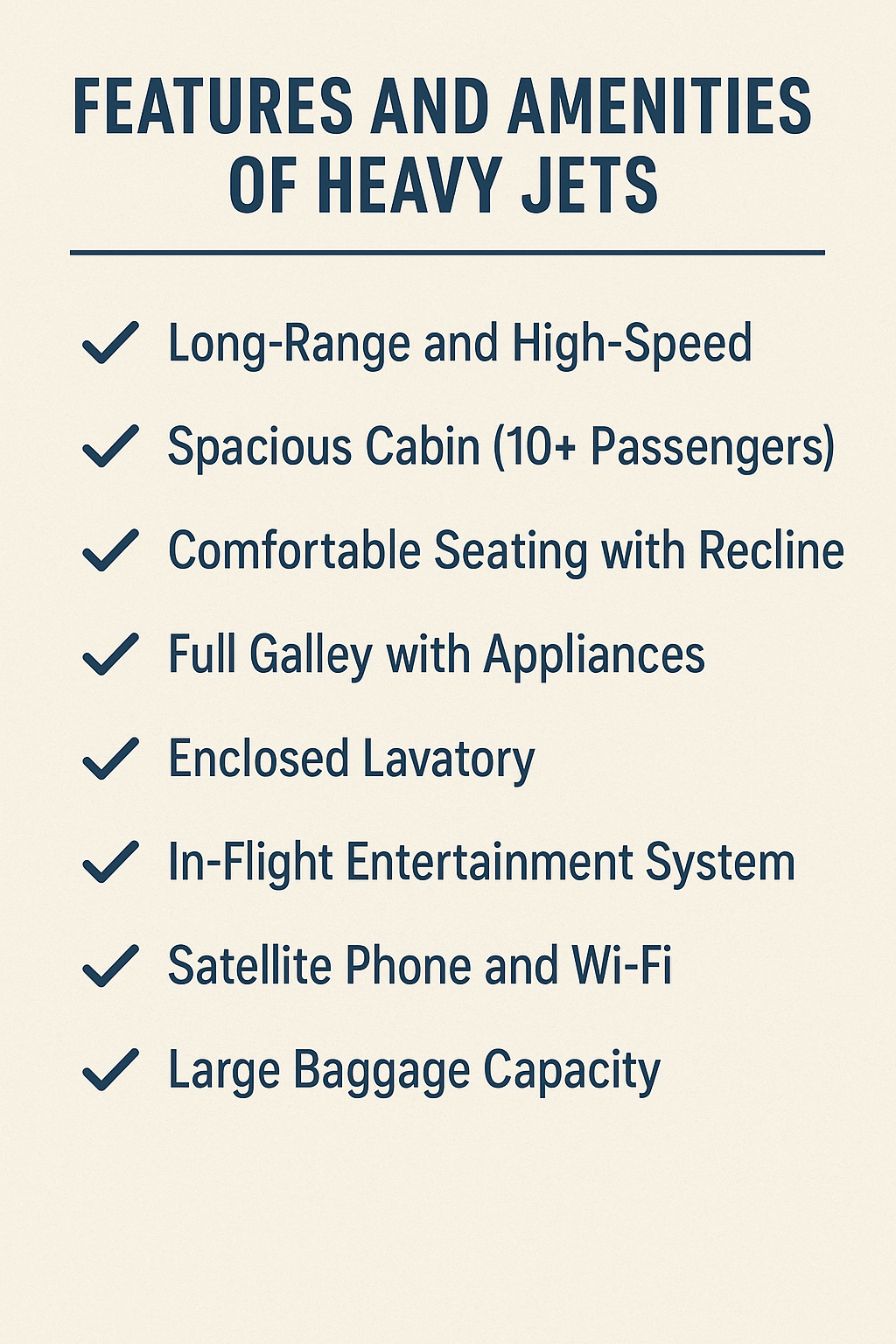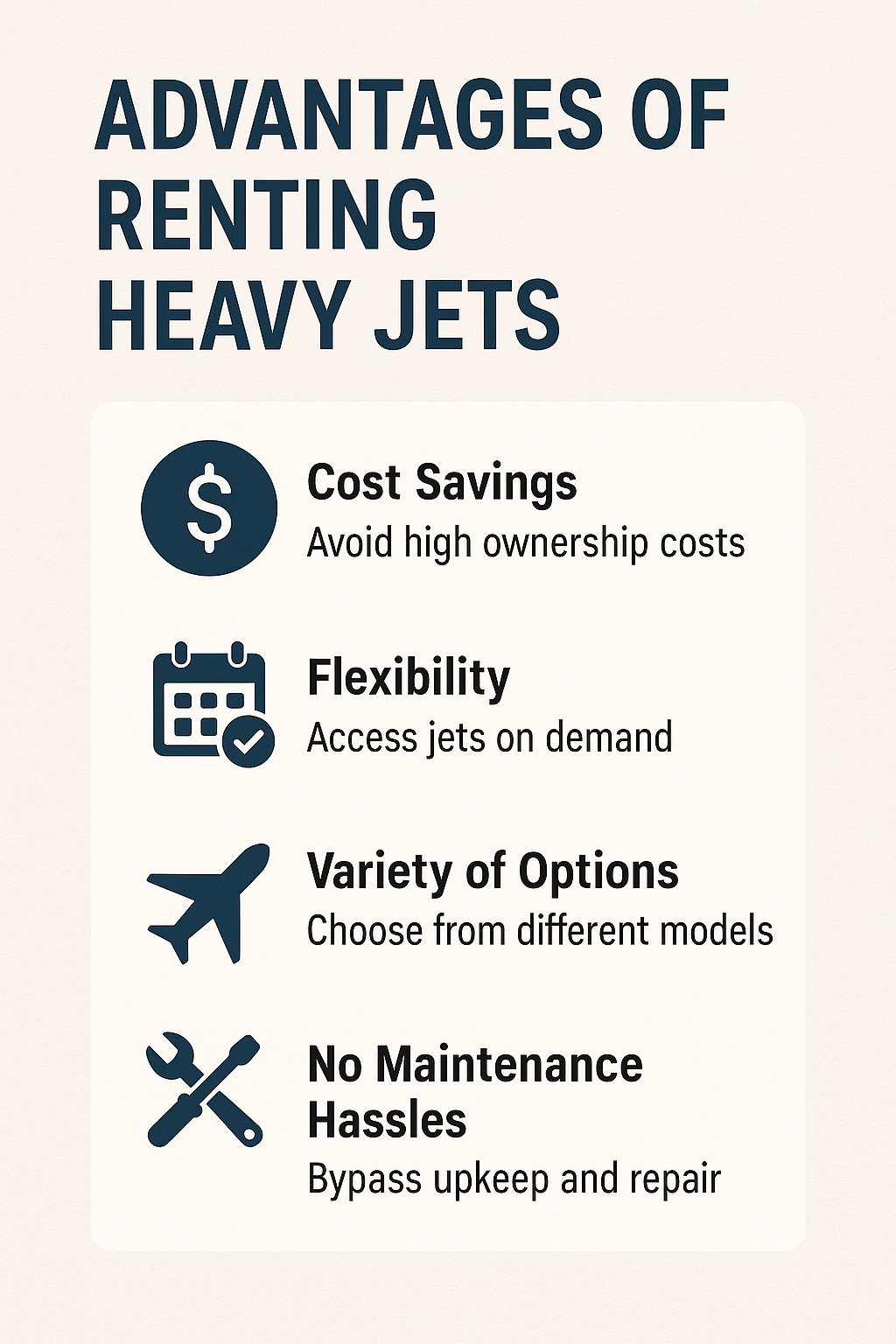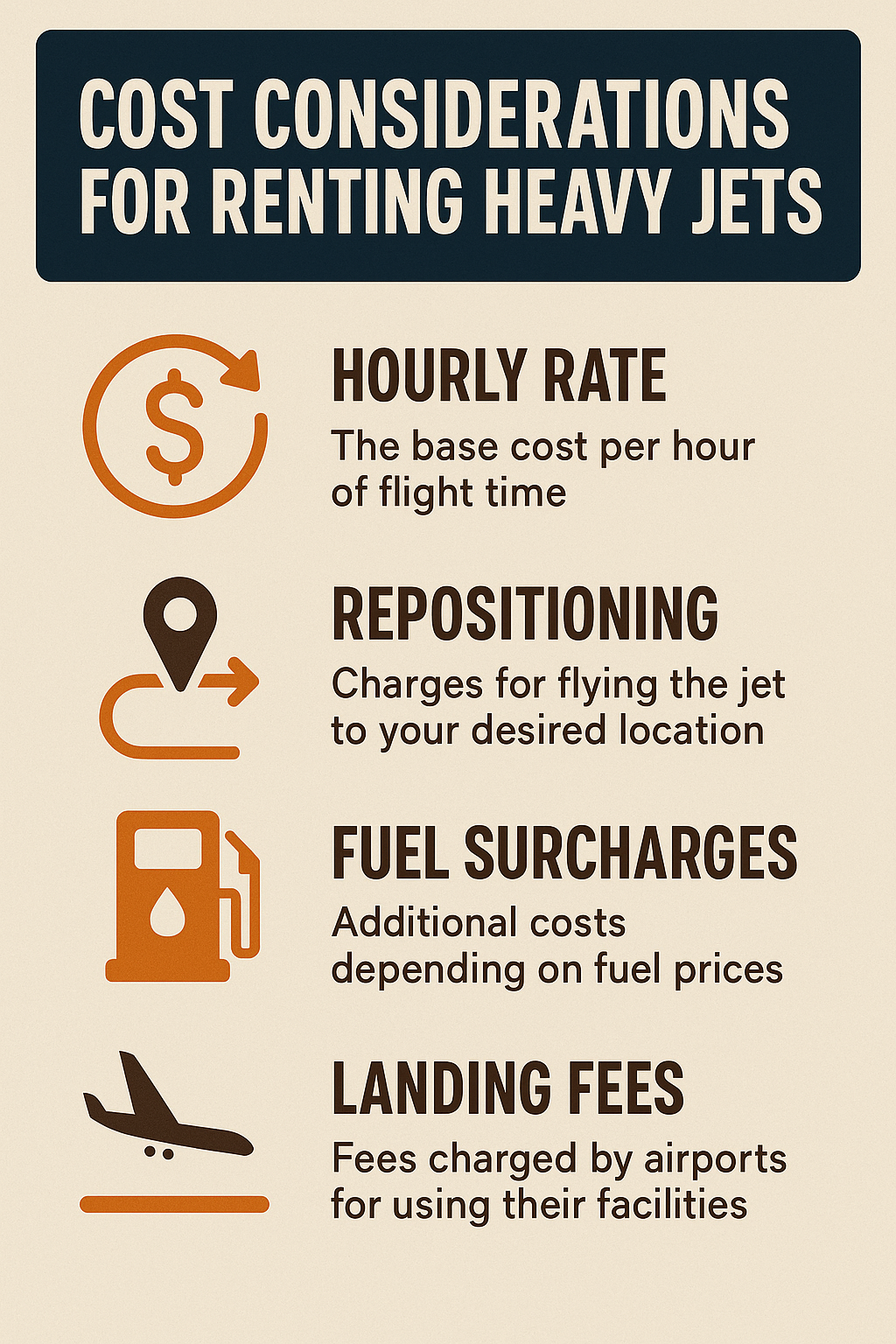Maintenance and Service Standards for Heavy Jets
Heavy jet maintenance involves a clear set of inspections. There are A checks, which happen every 400 to 600 flight hours. Then, B checks take place every 6 to 8 months. C checks occur every 18 to 24 months, and D checks are done every 6 to 10 years. These checks ensure that the jets meet FAA rules and the guidelines set by manufacturers.
Life-limited parts, or LLPs, need to be replaced at specific times, no matter their condition. Advanced monitoring systems make it easier to predict when maintenance is needed. Accurate documentation and skilled technicians are vital for today’s complex maintenance programs.
Heavy jets are built for luxury and performance. They offer spacious cabins, high cruising speeds, and advanced technology. Pilots appreciate the reliability that comes with these aircraft. Regular maintenance keeps them safe and ensures a comfortable ride.
Key Takeaways
Heavy jets go through several types of maintenance checks: A, B, C, and D. These checks vary in complexity. A check might be a straightforward 400-hour inspection. In contrast, a D check can be a detailed overhaul that takes 6 to 10 years.
Life-Limited Parts (LLPs) are crucial components that must be replaced at set times, no matter their condition. Their replacement cycles can range from 1,500 to 20,000 flight hours. This ensures that the jets remain safe and reliable.
Advanced monitoring systems are in place. They continuously track the status of key components. This real-time data allows for predictive maintenance. It helps in catching potential issues before they lead to problems.
All maintenance work must follow strict guidelines from manufacturers and comply with FAA regulations. This is essential for keeping the aircraft certified for airworthiness.
Technicians who perform this maintenance need to be qualified. They must hold FAA certifications. Typically, they undergo 18 months of training and gain 3 to 5 years of hands-on experience. This ensures they have the skills needed to work on these complex machines.
Heavy Jet Maintenance Schedules and Regulatory Requirements
Four main maintenance check levels are essential for a heavy jet’s service life. A checks take place every 400-600 flight hours. These checks involve simple inspections that ensure daily safety.
As you look into aircraft management, you’ll notice that regulatory standards require more detailed B and C checks. C checks can take the aircraft out of service for 1-4 weeks and occur every 18-24 months.
Aircraft management involves rigorous B and C checks, with C checks grounding jets for up to a month every two years.
The D check is the most comprehensive heavy maintenance visit. It happens every 6-10 years and requires almost complete disassembly for in-depth inspection.
Advanced Aircraft Health Monitoring Systems help operators keep track of maintenance schedules in real-time. This technology changes how we handle service intervals. Life-limited parts must be swapped out on strict schedules, no matter their condition. This guarantees that your fleet meets the highest safety standards.
Essential Inspection Protocols for Commercial Heavy Jets
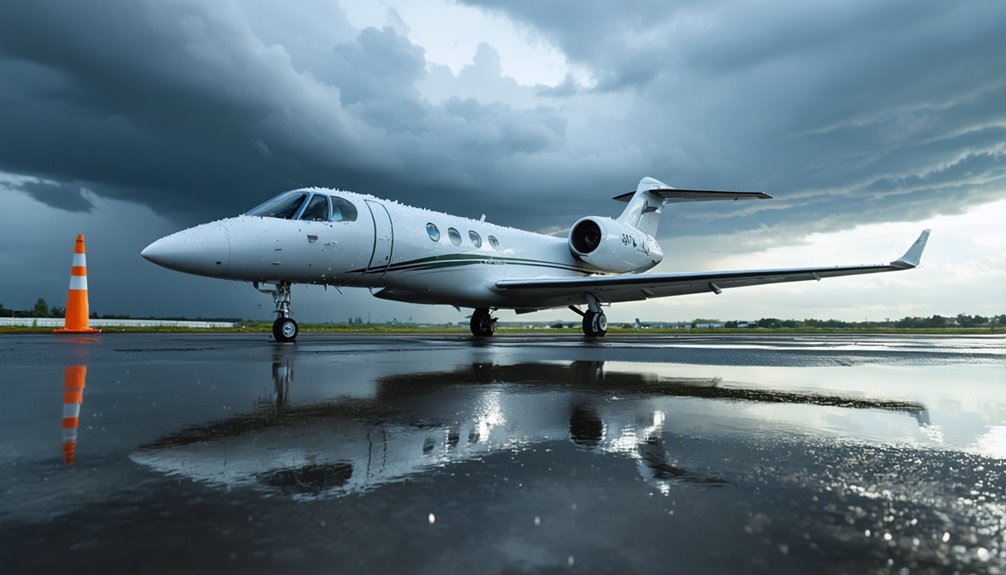
Maintaining heavy jets is crucial for safety and performance. Let’s look at the specific inspection protocols that ensure these aircraft stay airworthy.
Commercial heavy jets go through several maintenance checks at set intervals. A Checks happen every 400-600 flight hours. These checks focus on general inspections for any damage or signs of corrosion.
B Checks take place every 6-8 months and require about 160-180 labor hours. They involve more detailed inspections to catch any emerging issues.
C Checks are more intensive. They occur every 18-24 months and can demand up to 6,000 labor hours. These checks often take the aircraft out of service for 1-4 weeks. During this time, technicians perform thorough examinations and necessary repairs.
Finally, D Checks are the most comprehensive. They happen every 6-10 years and require 30,000-50,000 labor hours. These checks can take 4-6 weeks to complete. They involve disassembling various parts of the aircraft to inspect and repair systems in great detail.
These inspection protocols are vital. They’re set by manufacturers and bodies like the FAA. Following them ensures that maintenance meets strict safety standards. This structured approach is essential in keeping our skies safe and maintaining the reliability of heavy jets.
Component Replacement Cycles and Life-Limited Parts
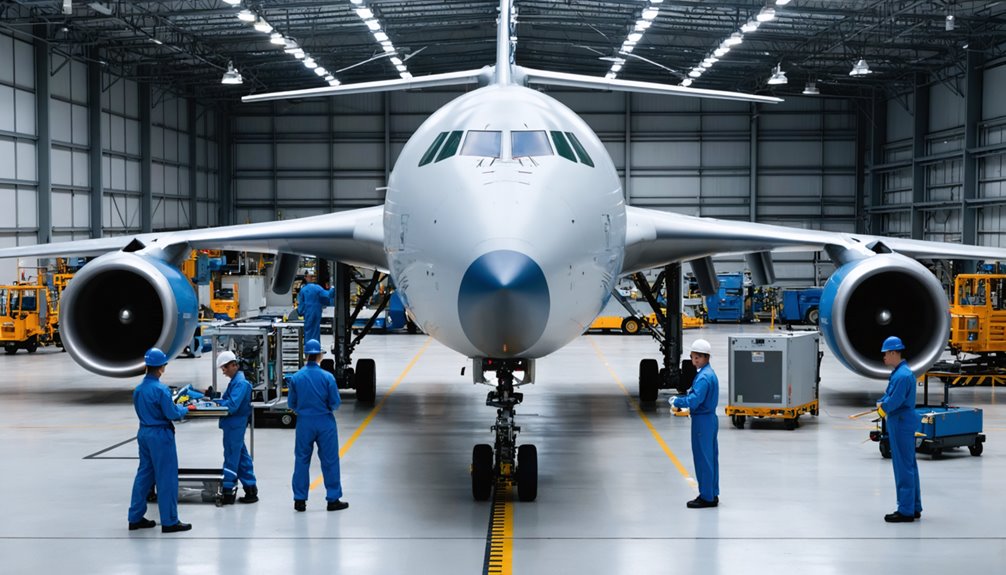
When looking at private jets, heavy jets stand out for their impressive capacity and range. These aircraft typically offer more space and comfort, making them ideal for long-haul flights. They can accommodate larger groups of passengers, making them a popular choice for corporate executives and VIPs.
Heavy jets have powerful engines that allow them to fly longer distances without needing to stop for fuel. For example, models like the Gulfstream G650 can travel over 7,000 nautical miles, connecting cities like New York and Tokyo non-stop. This capability saves time and enhances productivity for travelers.
Maintenance of these jets is crucial for safety and performance. Life-limited parts, which are components with a specific lifespan, must be monitored closely. Manufacturers set strict guidelines for these parts. Some may need to be replaced after just 1,500 flight hours, while others can last up to 20,000 hours.
Regular inspections help in spotting issues before they affect the aircraft’s safety. Scheduled overhauls ensure compliance with these guidelines. This process involves replacing parts at required intervals and checking the overall condition of the aircraft.
Critical Lifecycle Monitoring Systems
Heavy jets are a vital part of the aviation world. They serve a variety of purposes, from business travel to cargo transport. These aircraft are known for their spacious cabins, long-range capabilities, and impressive power. They’re designed to handle large distances efficiently while providing comfort and luxury to passengers.
When it comes to maintenance, heavy jets require special attention due to their complex systems and life-limited parts (LLPs). Critical Lifecycle Monitoring Systems play a crucial role in managing these components. They help track the usage and condition of parts, ensuring they’re replaced at the right time. This data is important for meeting FAA regulations.
These monitoring systems offer detailed insights into each part’s history. They predict when replacements are needed, allowing for better maintenance planning. Instead of waiting for something to break, operators can schedule repairs in advance. This proactive approach enhances safety and reduces the risk of unexpected failures.
What’s remarkable about these systems is their ability to lower maintenance costs while extending the aircraft’s lifespan. By adopting this technology, operators can turn a necessary compliance task into a strategic advantage.
Heavy jets equipped with these systems not only meet regulations but also perform better in the competitive aviation market.
Manufacturer Compliance Requirements
Heavy jets play a crucial role in the aviation industry. These aircraft are designed for long-range travel and can carry a significant number of passengers or cargo. Compliance with manufacturer requirements is essential for their safe operation. Each heavy jet has specific guidelines for maintenance and component replacements, which are based on service hours or flight cycles.
When it comes to maintenance, life-limited parts (LLPs) are particularly important. These parts must be replaced at designated intervals, regardless of their condition. The type and lifespan of LLPs can vary widely depending on the aircraft model. Tracking these components is vital for ensuring safety. Authorities like the FAA enforce strict adherence to these rules, making compliance a must for all operators.
To effectively manage a maintenance program, I always refer to manufacturer manuals. These documents provide critical information on LLPs and their replacement schedules. By following these guidelines, I ensure that the aircraft remains safe and reliable.
Keeping the heavy jet in top condition isn’t just about meeting regulations; it’s also about embracing innovation in aviation maintenance.
Scheduled Overhaul Protocols
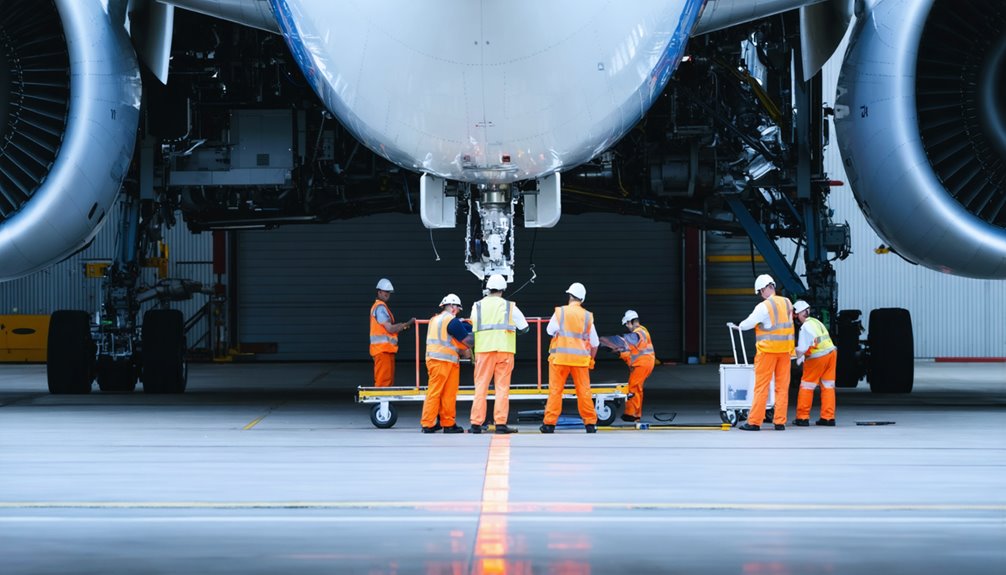
Scheduled overhaul protocols are essential for maintaining heavy jets. They ensure that aircraft operate safely and efficiently. I’ve observed how Time Between Overhauls (TBO) guidelines differ among various aircraft models, typically ranging from 3,500 to 7,500 flight hours.
When creating a maintenance plan, I focus on key aspects. First, tracking life-limited parts (LLPs) is crucial to avoid in-service failures. Second, I align component replacement cycles with major overhauls, usually every 6 to 10 years. Third, I reference manufacturer-specific TBO guidelines for different engine types. Lastly, I integrate these plans with routine inspection schedules to reduce downtime.
Adhering to proper Maintenance, Repair, and Overhaul (MRO) practices goes beyond meeting regulations. It can significantly extend the operational life of your jet. I’ve seen that careful monitoring of components can prevent expensive unscheduled maintenance events. These events can leave your aircraft grounded when you need it operational the most.
Service Documentation and Record-Keeping Best Practices
Heavy jets are a crucial part of private aviation. These aircraft are designed for long distances and can carry more passengers and cargo than smaller jets. They often come with luxurious amenities, making them popular for business and leisure travel.
Documentation plays a key role in maintaining these heavy jets. It’s not just about following FAA rules; it’s about telling the aircraft’s history. Keeping detailed records is essential. This includes dates of inspections, parts that have been replaced, repairs made, and who worked on the aircraft.
Digital maintenance platforms are becoming popular. They allow us to track parts that have a limited lifespan and monitor Time Between Overhaul (TBO) intervals more efficiently. These systems make it easy to access important information during audits and improve planning for maintenance.
Regularly looking at service records helps spot problems early, before they lead to serious failures. The quality of your documentation matters. It affects the jet’s safety, its market value, and how well it operates. Investing in proper record-keeping is a wise choice for any owner of a heavy jet.
Advanced Diagnostic Technologies in Heavy Jet Maintenance
Predictive failure analysis has changed how we maintain heavy jets. This method uses advanced algorithms to spot potential problems before they disrupt flights. By using Internet of Things (IoT) diagnostic systems, we set up a network of sensors. These sensors keep an eye on important parts of the aircraft and send real-time performance data to our maintenance teams.
This connected system allows us to perform maintenance based on the actual condition of the aircraft, not just on a set schedule. This shift significantly lowers the time jets spend on the ground and boosts safety across our fleet.
Heavy jets, known for their size and capability, greatly benefit from these technological advancements. They require special attention due to their complex systems and higher stakes in the aviation industry.
Incorporating these innovative techniques leads to more reliable operations and better overall performance. It’s a game-changer for keeping heavy jets in top shape and ensuring they meet the demands of modern air travel.
Predictive Failure Analysis
Heavy jets are a popular choice among private aircraft enthusiasts. They offer a blend of luxury, performance, and range that’s hard to match. With their spacious cabins and powerful engines, these jets cater to those who want to travel in comfort and style.
One of the main types of heavy jets is the Bombardier Global series. These aircraft are known for their long-range capabilities and lavish interiors. They can fly non-stop for over 6,000 miles, making them ideal for international trips.
Another notable heavy jet is the Gulfstream G650. It boasts one of the fastest cruise speeds in its class and offers a quiet cabin, perfect for business meetings on the go.
The Dassault Falcon 7X is another contender in this category. Its unique three-engine design allows for better fuel efficiency and greater range. Plus, it can land on shorter runways, giving it access to more airports around the world.
Heavy jets also come equipped with advanced technology and luxurious amenities. Many feature fully-equipped kitchens, spacious bedrooms, and state-of-the-art entertainment systems. This makes them not only a mode of transportation but also a mobile office and living space.
IoT Diagnostic Integration
Heavy jets have become a vital part of private aviation, offering a luxurious way to travel long distances. These aircraft are designed for comfort and efficiency, making them popular among business executives and high-profile individuals.
One standout feature of heavy jets is their spacious interiors. They often come with large cabins, allowing for various configurations. You can find areas for dining, lounging, and even sleeping. This comfort is essential for long flights, as passengers can work or relax without feeling cramped.
Another key aspect is their impressive range. Heavy jets can fly thousands of miles without needing to refuel. This capability opens up global travel options, connecting major cities quickly and conveniently.
Safety is a top priority with these aircraft. They’re equipped with advanced avionics and multiple redundant systems, ensuring that flights remain secure. Maintenance is crucial, and many operators now use IoT technology to monitor aircraft health. This real-time data helps maintain performance and prevent issues.
Manufacturer-Specific Service Standards and Variations

Heavy jets come in various types, and manufacturers design them with unique features and systems. This means that each jet has its own set of service standards. These standards are important for keeping the aircraft safe and operational.
When you look at how different manufacturers handle maintenance, you’ll see some key differences. Each jet has specific manuals and checklists that detail what needs to be done. The timelines for replacing parts that have a limited lifespan also vary. Some jets may require parts to be changed sooner than others, based on how they’re designed.
Additionally, inspection schedules depend on how much the jet is used and its age. Each manufacturer has its own approach to determining when inspections should take place. They also have special diagnostic methods that focus on the unique aspects of their aircraft.
Following these guidelines is crucial. Ignoring them can lead to safety issues, legal troubles, and increased risks during operation. Heavy jets are complex machines, and proper maintenance is vital for their performance and safety.
Personnel Qualifications and Training for Heavy Jet Servicing
Servicing heavy jets requires a high level of expertise. Technicians must undergo thorough training and obtain necessary certifications that align with industry standards. FAA certifications are essential. Typically, technicians engage in demanding 18-month training programs before they work on these complex aircraft.
When I assess personnel qualifications, I prioritize specialists with advanced certifications in key areas such as avionics and hydraulics. These certifications show a dedication to high standards beyond the basic ones. Continuous education is critical. Professionals who keep learning stay updated with the latest technologies, which is vital in our fast-paced industry.
Experience is crucial too. I only allow technicians with at least 3 to 5 years of documented maintenance work to service my fleet independently. This strict standard is key to ensuring both safety and optimal performance for valuable assets like heavy jets.
Cost Management Strategies for Long-Term Maintenance Programs
Managing costs for heavy jet maintenance isn’t just about fixing problems as they come up. It’s about planning ahead. With the right strategies, maintenance can actually give you an edge.
Proactive maintenance planning transforms challenges into opportunities for operational excellence in aviation.
Here are four smart strategies to consider:
- Join maintenance programs that let you pay a set monthly fee. This helps you budget better. You won’t face unexpected costs, which can strain finances.
- Use real-time engine monitoring. This technology helps catch issues before they become serious. It can save thousands on costly emergency repairs.
- Track your maintenance carefully. Good tracking systems help you schedule work better and use resources more efficiently. This leads to reduced downtime and costs.
- Team up with manufacturers or dependable third-party services. They often offer bulk pricing that can lower your overall maintenance expenses.
Heavy jets require attention and care, but with these strategies, you can manage costs effectively and keep your aircraft in top shape.
Emerging Trends in Predictive Maintenance for Heavy Jets
Private jets come in various types, with heavy jets being among the most spacious and luxurious. These aircraft are designed for long-range travel and can accommodate larger groups of passengers. Heavy jets, like the Gulfstream G650 and Bombardier Global 7500, offer comfort and advanced technology.
Maintenance for these heavy jets has seen significant changes. Traditionally, mechanics relied on scheduled checks and manual inspections. Now, with Aircraft Health Monitoring Systems (AHMS), real-time data collection helps technicians spot issues before they turn into expensive repairs. This shift has increased aircraft reliability by about 20%.
The rise of IoT technology has also changed how we maintain heavy jets. Continuous monitoring of vital parts helps extend the life of these aircraft. Advanced tools like vibration analyzers and borescopes allow teams to find hidden problems early, which cuts down on unexpected downtime.
Data analytics and machine learning are gaining traction in this field. They can predict potential failures and help schedule maintenance based on actual aircraft performance. This method is smarter than relying on fixed timelines and leads to more efficient maintenance practices.
Frequently Asked Questions
What Is Considered Heavy Jet Maintenance?
Heavy jet maintenance involves thorough inspections that lead to significant downtime for the aircraft. This type of maintenance is crucial for safety and performance. It requires a detailed approach to complex repair protocols and careful planning of maintenance schedules, particularly for C and D checks.
C checks are extensive inspections that occur every 20-24 months and involve checking various systems to ensure everything meets strict aviation standards. D checks, the most comprehensive, happen about every 6-10 years. They involve a complete overhaul of the aircraft, often taking several weeks to complete.
During these checks, technicians examine the airframe, engines, and other critical components. They also replace parts as needed, ensuring the jet operates safely and efficiently. Compliance with aviation regulations is mandatory, and this maintenance is essential for the longevity and reliability of heavy jets.
How Much Maintenance Does a Jet Need?
Heavy jets require consistent upkeep to ensure safety and performance. Maintenance schedules vary widely, ranging from minor daily checks to extensive D Checks. Typically, these aircraft need maintenance every 24 to 600 flight hours. Major overhauls happen every 18 months to 10 years, depending on usage and specific models.
Preventative maintenance is crucial. It helps catch issues early and keeps the jet in top condition. Regular checks can prevent costly repairs down the line. Keeping a well-organized schedule is essential for any heavy jet operator. This approach not only improves safety but also enhances the jet’s longevity and reliability.
How Much Maintenance Does a Fighter Jet Need?
Heavy jets are a fascinating category of private aircraft. They offer spacious interiors and long-range capabilities. Owners of heavy jets often enjoy luxurious amenities and advanced technology.
Maintaining these jets is crucial for safety and performance. Daily inspections keep everything in check. A checks happen every 400 to 600 flight hours, ensuring systems function well. C checks occur every 18 to 24 months. These checks dive deeper into the aircraft’s condition. D checks are the most extensive, taking place every 6 to 10 years. They involve a thorough examination of the entire jet.
Regular maintenance is essential for operational readiness. It keeps heavy jets flying smoothly and safely. With proper care, these aircraft can serve their owners for many years.
What Are the Requirements for Aircraft Maintenance?
Heavy jets are a popular choice for private aviation. These aircraft are known for their spacious interiors and long-range capabilities. They often come equipped with luxurious amenities, making long flights comfortable and enjoyable.
When it comes to maintenance, heavy jets require careful attention. Regular inspections and adherence to maintenance schedules are crucial for safety. Mechanics must follow strict regulations to ensure that each aircraft remains airworthy. This includes checking important components, replacing worn parts, and keeping detailed records of all work done.
Innovative methods can help streamline maintenance processes. For instance, advanced diagnostic tools can identify potential issues before they become serious problems. This proactive approach not only keeps the aircraft in top condition but also saves time and money over the long run.
Conclusion
Heavy jets come in various types, each designed for specific needs. These aircraft are known for their spacious cabins and long-range capabilities. Popular models include the Gulfstream G650, Bombardier Global 7500, and Dassault Falcon 8X. Each of these jets offers unique features that cater to different preferences and requirements.
When it comes to maintenance, heavy jets require strict adherence to safety standards. Regular inspections are essential. Technicians check engines, systems, and components to ensure everything runs smoothly. Predictive maintenance technologies help identify potential issues before they become serious problems. This proactive approach keeps flights safe and reliable.
Digital documentation plays a crucial role in managing maintenance records. Keeping accurate logs helps track the history of each aircraft. This practice not only assists in compliance with regulations but also enhances operational efficiency. Maintenance teams can make informed decisions based on data trends.
Investing in skilled personnel is vital. Technicians need ongoing training to keep up with evolving aircraft technologies. A knowledgeable team ensures that maintenance meets high standards. This commitment to professional development is essential for achieving operational excellence.
In conclusion, heavy jets represent a significant investment. Proper maintenance is not just a regulatory requirement; it is a necessity for safety and performance. By focusing on rigorous inspections, accurate documentation, and skilled technicians, operators can build a strong foundation for their aviation operations.
